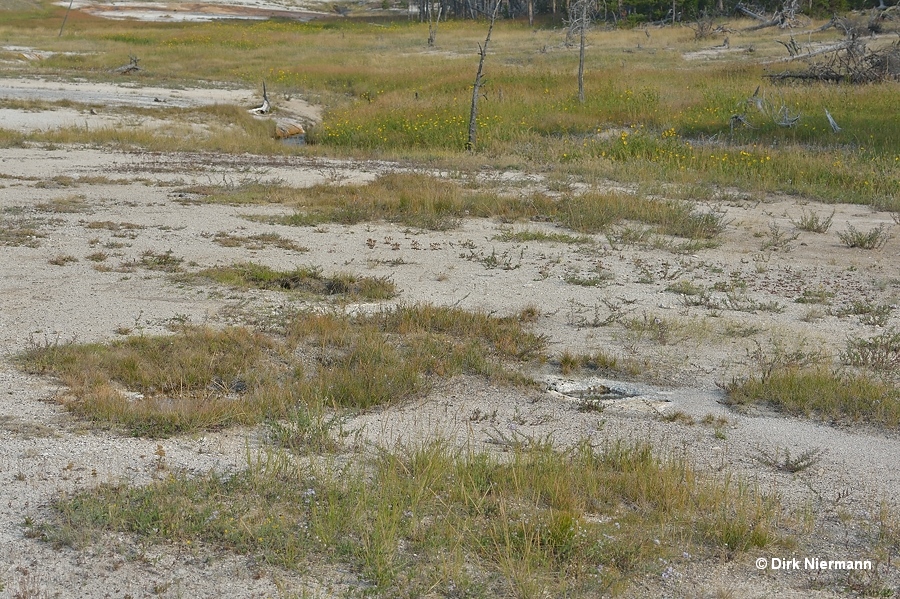Firehole Lake Drive, White Creek Group
Across the roadway from Great Fountain Group at Firehole Lake Drive, White Creek Group extends to the southeast along White Creek. Farther southeast Ravine Group adjoins. An unpaved trail into the area used to start at the Great Fountain Geyser roadway turnout, but unfortunately it has been closed to the public since 2012. That is a great pity because White Creek and Ravine Groups comprise gorgeous springs such as Octopus Spring, Five Sisters, Mushroom Spring, and Twin Butte Vista Spring.
In 1966 Thomas D. Brock discovered the thermophilic bacterium Thermus aquaticus, bright orange streamers seaming the effluent channels of Mushroom Spring and Octopus Spring. Thermus aquaticus yielded a DNA-copying enzyme that works between 50 °C and 80 °C (122 -176 °F) and became a tool for the technique of amplifying DNA, called polymerase chain reaction (PCR). Another spectacular find in the upper outflow channel of Octopus Spring was made in October 1994, when a group of researchers led by Robert Huber discovered gelatinous pinkish masses of the hyperthermophilic bacterium Thermocrinis ruber, with an upper temperature limit of 89 °C (192 °F) one of the most heat-loving bacteria ever detected.
By now there's nothing else for it but to observe features of the northwest part of White Creek Group from the roadway. The mostly small pools on the plain southeast of Firehole Lake Drive are rather hard to spot. The first one in the north is LNN002, also known as UNNG-WCG-7. Geyser activity has been observed only once, back in 2005.
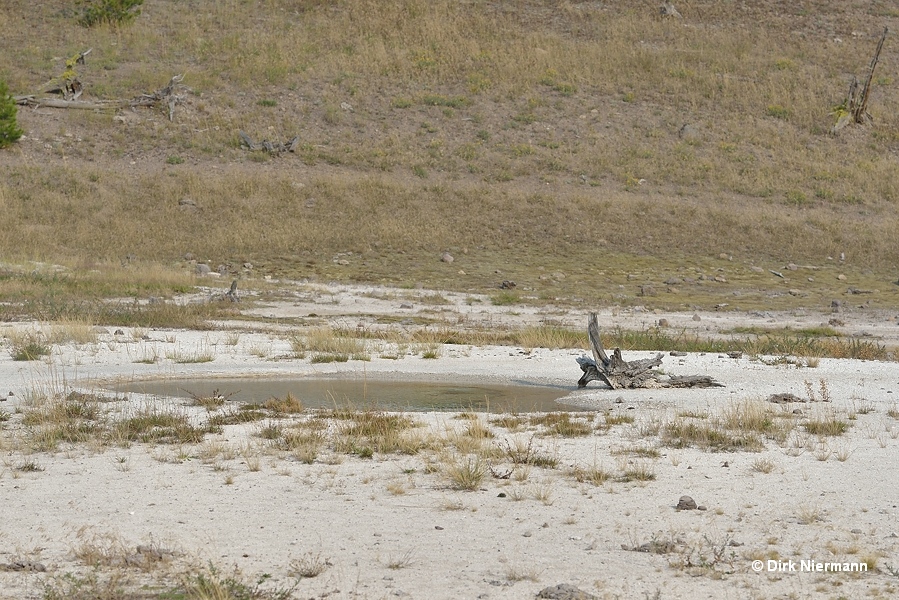
Farther south and also farther away from the road A-0 Geyser (also written as A-Zero Geyser) shows up. It's one of the few geysers here known to show frequent activity with an interval around 30 minutes.
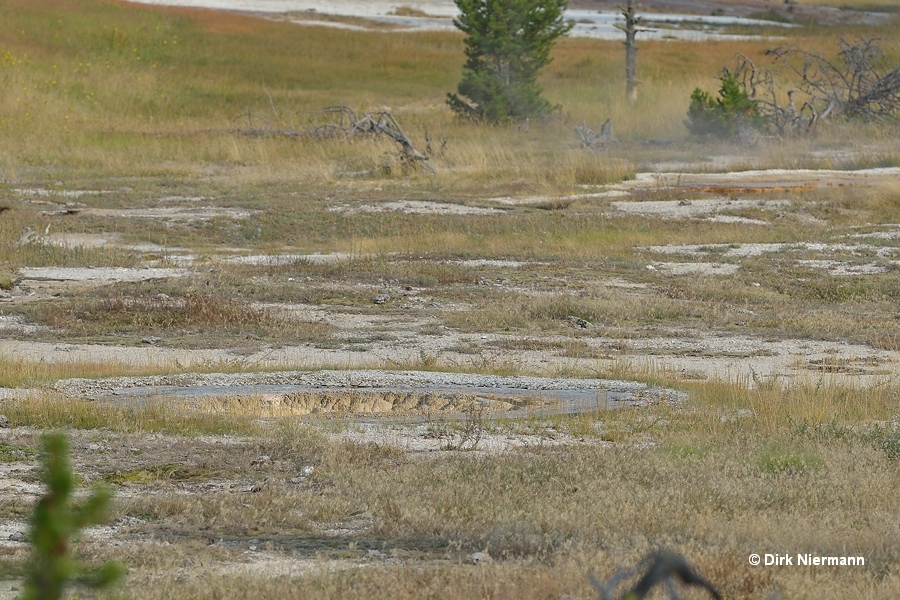
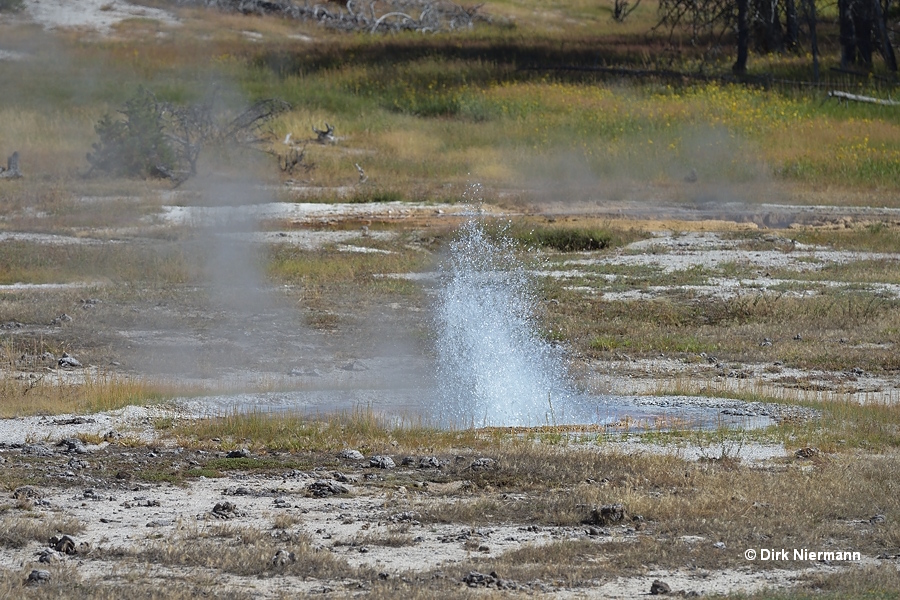
Approximately 10 m southwest of A-0 Geyser the small blue pool of A-1 Geyser can be spotted. In contrast, the pool of A-2 Geyser, which is located only a few feet beyond A-1, is nearly obscured by grass patches in summer. Both geysers are dormant for many years.
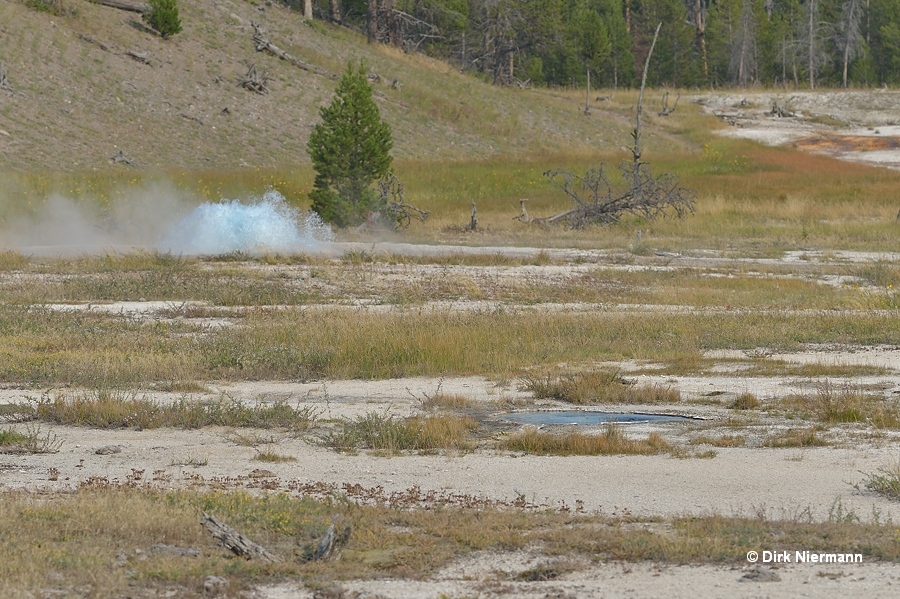
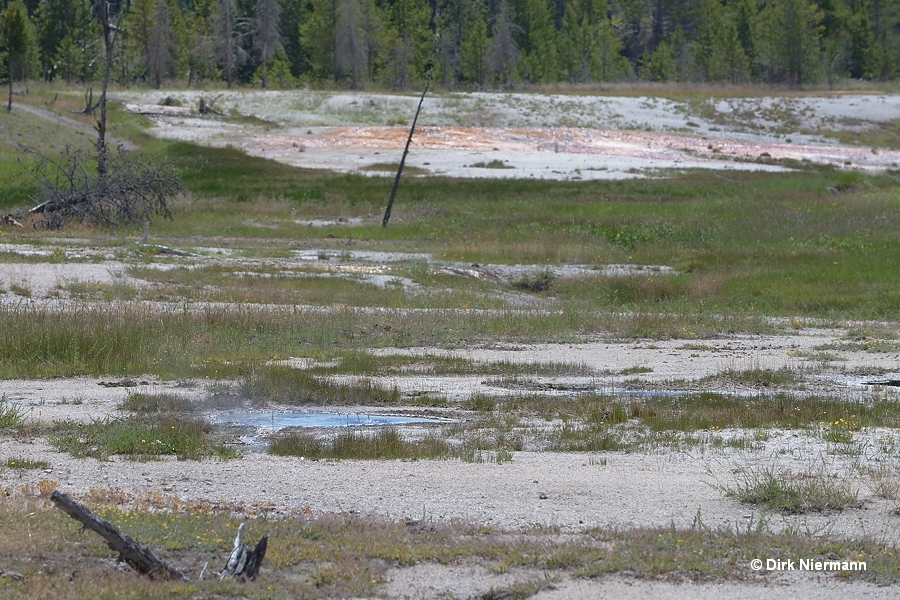
Botryoidal Spring is by far the most active geyser of the group to be seen. It erupts every few minutes up to 6 m (20 feet) high. Few visitors take notice of its activity, since it is located 100 m (110 yards) off the road.
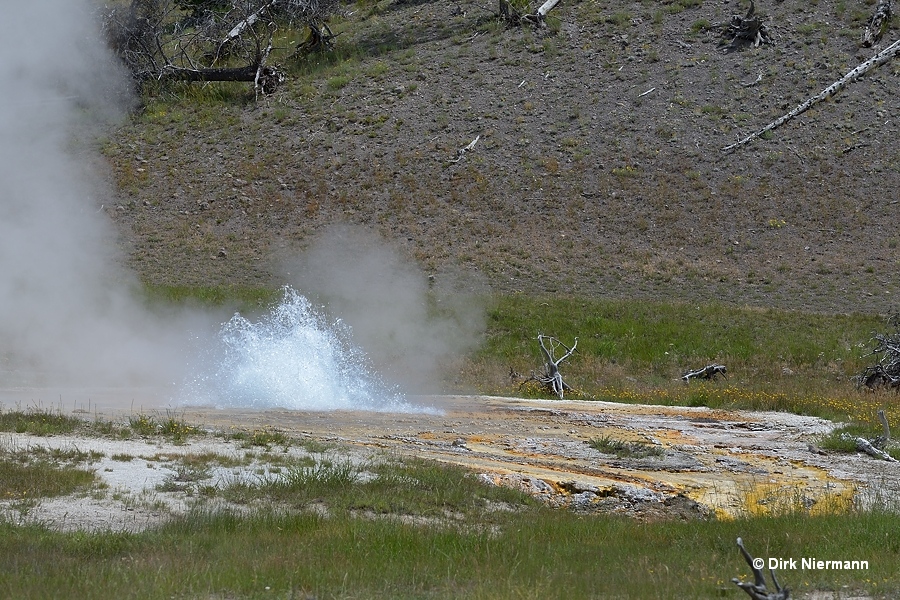
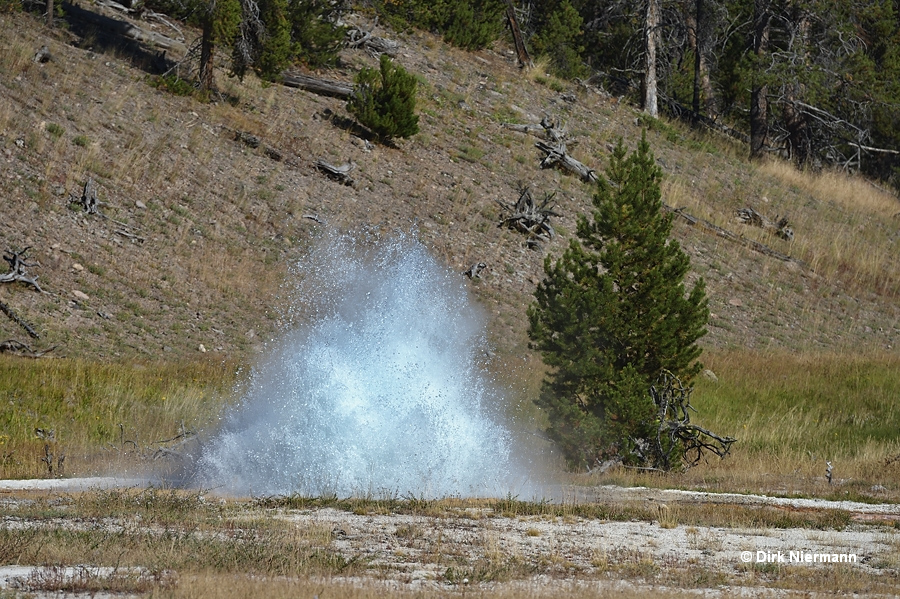
Logbridge Geyser is the southwesternmost geyser on the field, quite close to the road. The namegiving logs over White Creek have all but disappeared. Logbridge has been described as frequently active, but intervals have increased into the range of days to weeks in the last years.
